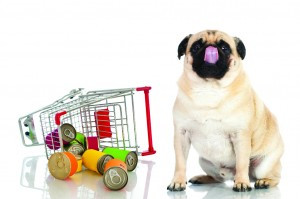In-Store Demos Can Mean Fuller Shopping Carts
Pet Age Staff //February 10, 2014//
In-store product demonstrations can take the promotion of your merchandise to a whole new level. It’s one thing to have a product visible on a shelf. It’s another thing to have a knowledgeable person offering samples and explaining to customers exactly what the value of a product is.
But in-store demos are the sort of thing that can reap huge rewards, or can go very wrong depending on how it is done, and especially whether employees or store management are really prepared and bought into the idea of having the demos going on.
Jennifer Houston is vice president of client services at Attack Marketing, which conducts in-store demos for a variety of different retailers. According to Houston, in-store demos can build customer loyalty to product brands as well as to retailers themselves, if the engagement with consumers is approached effectively. It starts with understanding how to establish a meaningful engagement in the first place.
“We don’t want people who have an engagement time of one or two seconds, but if you have someone who can engage them more extensively, even if we can get that up to 30 to 45 seconds, then you would hope a sales comes from that engagement with them,” she said.
Getting people to give you their time means offering them something of value, and that is more than just product samples. Often it is information and a greater understanding of the product itself.
“People love to have free treats for their dogs,” Houston said. “There was a company doing a demo that gave me a sample bag and a coupon for $5 off my bag, and I was hooked. I was a customer for life. It’s about people who like your dog, and can answer questions about your dog. These people are trained, at least ours were, to answer these questions. They become these trusted advisors, and people look forward to seeing them in the store. That builds loyalty to the brand. You get to know the person that’s in there, and you look forward to seeing them on the weekend.”
There is probably no establishment that has done in-store demos more successfully than Costco, which has turned them into a destination event. And Houston said that while they may spend a lot of time giving things away for free, the end result is fuller baskets for Costco shoppers.
“People know that if they go to Coscto on the weekend, they can pretty much walk around the store and eat a meal,” Houston said. “So now people choose their dates on the basis of when those road shows or demos are going to be there. If you can create something where there are representatives and people know it’s going to happen, their basket will be more full.”
But, a problem when conducting in-store demos can be conflict between those staging the demos and everyday employees who are just trying to do their jobs, and sometimes find the demos to be a distraction.
“The consumer loves it,” Houston said. “Most of the time you see samples and the things you get, and people are excited about it. But it’s extra work for the employee.”
So how do you get employees to buy in to the idea that it’s a good idea to have in-store demos, even if they perceive it as interfering with their ability to do their jobs?
“It’s a very hard question to answer, because the answer I would give is, in a very high-level way, if we have these demonstrations and our sales go up, our store is more successful and we have more jobs for a longer period of time. But to tell that to an employee that’s making minimum wage, do they really care?”
Houston speculates that pet retailers might be able to learn from the consumer electronics industry, which is known for giving sales incentives to employees and thus tying their own success to the sales performance of the store. That, in turn, allows them to see more of a value in having dealing with a “hassle” like in-store demos.
“They put in incentives for people who are there to push the equipment after the demos are gone,” Houston said. “That doesn’t happen much in retail overall.”
Pet retailers can promote in-store demos in a variety of ways, using social media, traditional advertising, in-store posters and word of mouth. After a while, successful demos on days when the store has heavy traffic can become part of a shopper’s routine. While they probably can’t consume an entire meal at a pet retailer like they would at Costco, and their dogs are likely not going to be satisfied with treat samples, the demos can serve as an ongoing source of information and education that will help a shopper associate the retailer with the knowledge they need to care for their pets in the best way possible.
That, if done right, carries the reward of loyal shoppers for pet retailers.
– Dan Calabrese



















